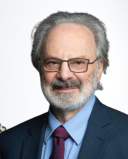Memory
Mysteries of the Human Cell
Biological cells have enormous capacity for information storage.
Posted October 11, 2021 Reviewed by Lybi Ma
Key points
- The cell membranes of cortical and somatic cells store information and memory.
- Information and memory is also stored within the cell.
- All of the major mechanisms by which nerves function—ion channels, neurotransmitters, and electrical synapses—exist throughout the body.
Today, intelligence is generally defined as the ability to understand and adapt to the environment by using inherited abilities and learned knowledge. To apply learned knowledge, it is necessary to have memory. This is in fact the case with all the cells in our bodies. There are at least three places in a cell where memories are located: the cell membrane, the cytoskeleton with its nanotubules, and the cell nucleus with DNA and RNA. There are also extracellular RNAs and stem cells that store memories.
An adult human body contains about 50 to 100 trillion cells. The only cell visible to us without a microscope is the ovum, which is as large as a dot on this page. Somatic cells store data relevant to their function but also a great deal more information. Our cells are comparable to computers programmed with software referred to as artificial intelligence. Just like AI-equipped computers change and learn from feedback so do our cells.
The Cellular Universe
From the standpoint of cellular intelligence, the organelle that concerns us most is the cytoskeleton. The cytoskeleton consists of a cellular scaffolding or skeleton within a cell’s cytoplasm. It is made up of microtubules, assembled from the protein tubulin into tube-shaped networks. Some studies support the view that it is the microtubules within the cytoskeleton that store memories. Nancy Woolf at the University of California, Los Angeles, concluded in the book, The Emerging Physics of Consciousness, that there is a link between microtubules, memory, and consciousness1.
The cytoskeleton is one of the best candidates for mechanisms underlying
information processing at the single-cell level. Stuart Hameroff2 of the Universityof Arizona, Tucson, supported by Sir Roger Penrose3, suggested that quantum vibrational computations in microtubules govern our consciousness.
New findings (4, 5) suggest that some of Hameroff’s claims are more credible than previously assumed. Quantum physics might be vital to our awareness, cognition, and even memory.
In addition to organelles, cells contain proteins. A human cell contains 12,000 proteins that amount to 42 million protein molecules in a space so tiny it is invisible to the naked eye6.
Cortical cells (neurons) and somatic cells both operate in a very similar fashion, reacting to signals with chemical and electrical activity and changes in the structure of their proteins. Body cells connect with other cells across what is called “Gap Junction” by exchanging ions and small proteins “Based on recent work on bioelectricity in somatic cells we suggest the fascinating possibility that memory could be globally distributed throughout the body7.”
Shomrat and Levin8 in their paradigm-shifting 2013 paper described how all of the major mechanisms by which nerves function—ion channels, neurotransmitters, and electrical synapses—exist throughout the cells and tissues of the body. According to these scientists, non-neural cells form a neural-like network that forms a very rich medium for encoding information and directing cell activity during regeneration. Of course, this process is continuous, not just during regeneration.
Very recently, cellular biologists9 from Harvard Medical School discovered that it is not only cells in the immune system that “remember” past experiences. They found that all adult tissues retain a memory, inscribed on their DNA, of the embryonic cells from which they arose. The study led to an even more intriguing finding, that the memory is fully retrievable. Cells can play the story of their development in reverse to switch on genes that were active in the fetal state. When cells grow up, they remember their childhoods.
Bruce Lipton10 and others have compared the cell’s membrane with its gates and channels to an information-processing transistor and organic computer chip or, microchip. The cell membrane, in addition to performing other duties, also directs the production of proteins that encrypt memories. This would apply to all cells in the body to both cortical cells and somatic cells.
“The same properties that make DNA a great genetic code for living organisms also makes it an interesting substrate to engineer,” says Timothy Lu10 at MIT. Seth L. Shipman11 of Harvard University, who lead the study wrote, “This work demonstrates that this system can capture and stably store practical amounts of real data within the genomes of populations of living cells.”
Cells communicate with neighboring cells and provide them with aid in case they suffer from stress or sickness. Adult tissues retain a memory, inscribed on their DNA, of the embryonic cells from which they arose.
Based on the evidence, as counterintuitive as this may be, it is hard not to conclude that the cells in our bodies are truly intelligent and as such, form an essential and necessary substrate of the embodied mind.
Memory is embedded in the matrix of our bodies. This means that one day in the case of brain tumors, Alzheimer’s, or similar neurological diseases there will be therapies capable of retrieving memories from the body and returning the person to normal or at least vastly improved functioning.
When the scientific community, especially the medical fraternity and pharmaceutical industry, begin to integrate these ideas into practice they will discover new and better treatments of many physical and mental diseases.
It is time we realized that there is no such thing as a disembodied mind. Your neural, chemical, and bodily responses are in continual conversation with one another, so mental faculties such as thinking, understanding, experiencing are mental and physical simultaneously. When faced with a whole person, we shouldn’t think that they can be divided into a mind and a body.
References
Excerpted from the Embodied Mind (2021 Pegasus)
1. Tuszynski, Jack A. (2006). The Emerging Physics of Consciousness. Springer-Verlag Berlin Heidelberg.
2. Hameroff, Stuart (2015). Is your brain really a computer, or is it a quantum orchestra tuned to the universe? Interalia Magazine
3. Penrose, R. (1994). Shadows of the Mind: A Search for the Missing Science of Consciousness, Oxford: Oxford University Press
4. Elsevier (2014). Discovery of quantum vibrations in ‘microtubules’ corroborates theory of
consciousnesDiscovery%20of%20quantum%20vibrations%20in%20'microtubules'%20corroborates%20theory%20of%20consciousness.html
5. Lambert, N., Chen, Y. N., Cheng, Y. C., Li, C. M., Chen, G. Y., & Nori, F. (2013). Quantum biology. Nature Physics, 9(1), 10.
6. Ho, B., Baryshnikova, A., & Brown, G. W. (2017). Comparative analysis of protein abundance studies to quantify the Saccharomyces cerevisiae proteome. bioRxiv, 104919.
7. Tseng, A., & Levin, M. (2013). Cracking the bioelectric code: probing endogenous ionic controls of pattern formation. Communicative & Integrative Biology, 6(1), 13192-200.
8. Shomrat, T., & Levin, M. (2013). An automated training paradigm reveals long-term memory in planarians and its persistence through head regeneration. Journal of Experimental Biology, 216(20), 3799-3810.
9. Adult cells maintain a virtually complete molecular “memory” of their embryonic origins, researchers find.
https://www.dana-farber.org/newsroom/news-releases/2019/adult-cells-mai…
10. Lipton, B. H. (2005). The Biology of Belief. Santa Rosa, CA: Mountain Of Love/Elite Books.
11. Shipman, Seth L, Nivala, Jeff, Macklis, Jeffrey D, Church, George M. (2017). CRISPR–Cas encoding of a digital movie into the genomes of a population of living bacteria. Nature, nature23017.




